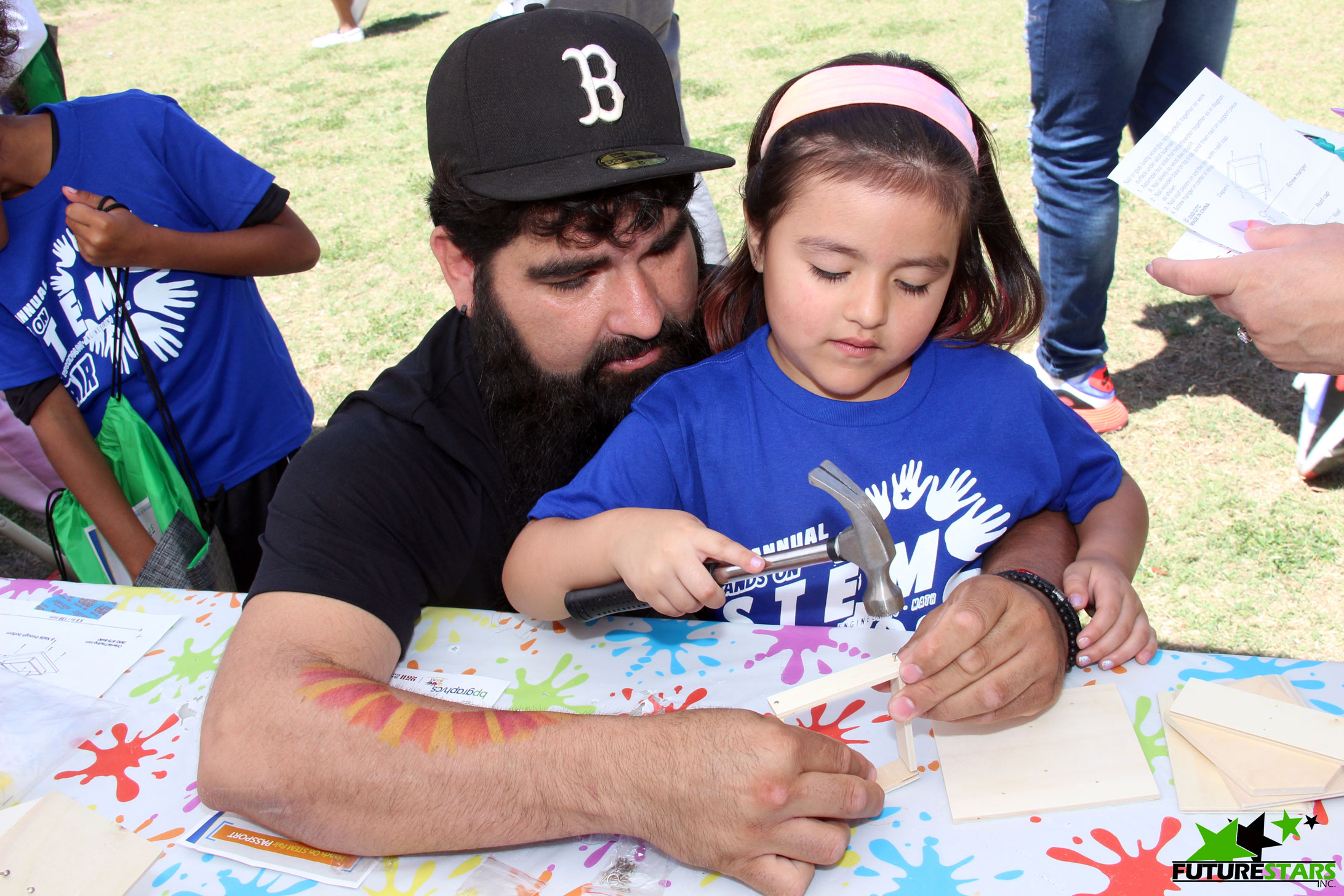FREQUENTLY ASKED QUESTIONS (FAQ)
What is STEM or STEAM?
STEM stands for Science, Technology, Engineering and Mathematics and STEAM is the same as STEM with the A standing for Arts. STEM is important because it saturates every part of our lives. Science is the study of the natural world around us. Technology is any product made by a human being to meet the needs, wants and desires of others. Engineering is the designs process use to solve problems and challenges in the world around us. Mathematics is the universal language of numbers, shapes, and quantities that seems so irrelevant to many people but is in every occupation, every activity we do in our lives. Both STEM & STEAM are often used to describe the suite of academic disciplines necessary for achieving and maintaining technical and scientific careers. The acronyms also groups these academic disciplines to address concerns that these subjects are often believed to be more open to men, and are taught in isolation, instead of as an integrated curriculum.
Why is STEM education important?
In the modern global economy, STEM education is closely linked with our nation’s economic prosperity. The United States has become a global leader, in large part, through the genius and hard work of its scientists, engineers and innovators. Yet today, that position is threatened as comparatively few American students pursue expertise in STEM fields. Many believe that our nation must expand the capacity and diversity of the STEM workforce pipeline to prepare more students for the best jobs of the future that will keep the U.S. innovative, secure and competitive. According to the U. S. Department of Commerce, STEM occupations are growing at 17%, while other occupations are growing at 9.8%. STEM degree holders have a higher income even in non-STEM careers. Science, technology, engineering and mathematics workers play a key role in the sustained growth and stability of the U.S. economy and are a critical component to helping the U.S. win the future. STEM education creates critical thinkers, increases science literacy, and enables the next generation of innovators.
What programs or activities does Future Stars support?
Future Stars currently has two Hands on STEM programs that are held at the Faye Gray recreation center and the Muriel Smith Recreation center during the school year. To end the school year there is a Hands on STEM Fair held in spring. More information about the Hands on STEM programs and Fair can be found under the Programs tab.
How do I sign up my child for the program?
To sign up a youth for the Hands on STEM program, please check out our programs and activities.
Does my child have to be good at science or math to join the program?
No, and we encourage all youth to get involved with various activities to determine their strengthens. The earlier the better it is for the youth to get exposed to STEM. A child learns to walk first by crawling, then by holding on to a railing, and then by letting go to take his or her first independent baby steps. The gradual timeline of learning to walk should also apply to children exploring STEM. When it comes to STEM, diving headfirst into the rapidly advancing fields of technology or the complex world of applied mathematics-for individuals at any age-seems more intimidating than rewarding. And yet educators are faced with a daunting-if not impossible-task of inspiring and guiding children individually through the world of STEM. But despite a teacher’s best efforts, students at every grade level are either gaining or losing interest in STEM subjects, for various reasons. That is why a parent’s involvement is crucial to help a child master STEM subjects within and beyond the classroom.
Parents should encourage their children to start as early as preschool and continue to foster their interest in STEM throughout their education, whether it’s participating in the science fair, joining the “Mathletes” club, or learning to code. STEM activities for kindergarten students will be easier for those who have been practicing STEM in early childhood. And by the time they reach high school, they are well-prepared to apply their knowledge and skills in the college classroom and eventually the work environment. In the following chapters we’ll outline what your child needs to know about STEM at the elementary, middle school, and high school stages and how you can prepare them for a rewarding career.
My child loves STEM activities, how do I keep them active while at home?
Youth are naturally curious. Allow your child to playing, exploring and asking lots of questions – that’s how children learn about themselves, about others and about the world around them. Develop and respect your child’s curiosity and creativity. Let your child discover and learn at their own pace. Accept the answers your child provides – they make perfect sense to them! Ask lots of questions. Questions help your child understand the task. Give your children the opportunity to play by themselves and with others- this builds their confidence and adaptability skills.
I want to help, how do I volunteer?
We would enjoy having you volunteer. For more information on volunteering, click here.

